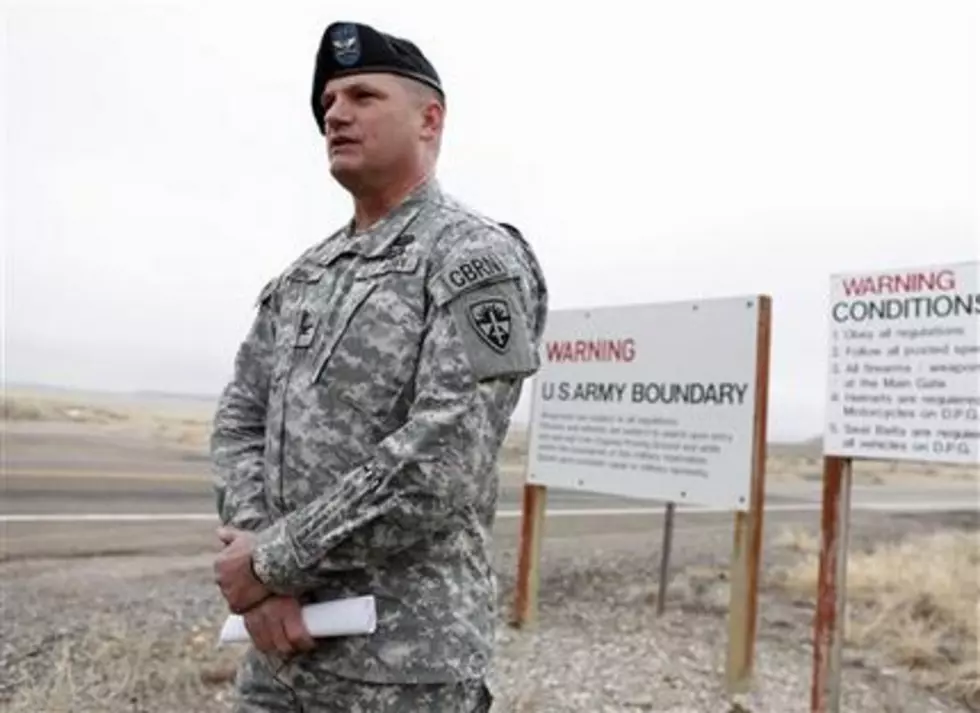
Anthrax shipments came from military site in Utah desert
SALT LAKE CITY (AP) -- The U.S. Army's mistaken shipment of live anthrax samples to government and commercial laboratories occurred at a military post in a desolate stretch of the Utah desert that has been testing chemical weapons since it opened in 1942.
The samples were sent to 18 labs in nine U.S. states and a military base in South Korea, and the Centers for Disease Control and Prevention is testing to see which ones were live, CDC spokeswoman Kristen Nordlund said.
The results are coming in slowly, she said, and the first full set of findings isn't expected until next week.
Though military officials have said they weren't aware of previous problems with anthrax, the Dugway Proving Ground, 85 miles west of Salt Lake City, has previously had at least two other problems with chemical weapons.
In 2011, Dugway was locked down for 12 hours because less than one-fourth of a teaspoon of VX nerve agent was unaccounted for. The agent affects the body's ability to carry messages through the nerves.
Military officials launched an internal investigation, but the results were not released. Questions about that incident were not answered Thursday by military officials. Utah Gov. Gary Herbert said in 2011 that he met with the commander and that the issue had been resolved to his satisfaction.
In 1968, the test site came under scrutiny when 6,000 sheep died nearby. An Army report produced two years later out of Maryland acknowledged that the nerve agent was found in snow and grass samples where the sheep died, The Salt Lake Tribune reported based on a report that was declassified in 1978. An Army spokesman said in the late 1990s that the Army does not accept responsibility for the sheep deaths, saying state agriculture scientists never identified the cause of death.
This latest incident has raised more concerns about a facility that many Utah residents hardly think about because it's in such a desolate area of this Western state where nearly three-fourths of the 2.9 million people live an urban corridor along Salt Lake City area.
Herbert said in a statement he's concerned about the incident and that his office has been coordinating with the CDC to monitor the investigation.
Steve Erickson, of the volunteer military watchdog group Citizens Education Project, said the incident isn't cause for panic but suggests more oversight is needed.
"Ever since 9/11, there's been a propensity to throw money at biodefense," Erickson said. "When you allow these activities to blossom and burgeon over a period of years without any effective oversight, you are asking for trouble."
Gen. Ray Odierno, the Army chief of staff, told reporters Thursday the problem may have been a failure in the technical process of killing, or inactivating, anthrax samples. He ruled out human error.
Samples from the anthrax lot led to more than two dozen people getting treatment for possible exposure, said CDC spokesman Jason McDonald.
McDonald said four people at labs in Delaware, Texas and Wisconsin were recommended to get antibiotics as a precaution, although they are not sick. About two dozen people were being treated for possible exposure at Osan Air Base in South Korea.
The Dugway Proving Ground was created by President Franklin D. Roosevelt, and has since gone through name changes and been closed and reopened several times.
Today, it sits on nearly 180,000 acres of flat, desert terrain with the Dugway Mountains in the distance. It's miles from any population base, but it has a village with an elementary and high school, medical clinic, a few restaurants, a theater, pool, gym, and homes and temporary lodging.
About 1,700 people work at Dugway, including a mix of military and nonmilitary scientists, chemists, microbiologists and engineers.
It is one of six Army equipment-testing facilities that also include sites in Maryland, Arizona, Alabama and New Mexico.
In one of the chemical testing buildings at Dugway, test chambers are used to test chemical warfare agents, the Army says in online materials. At an outdoor test range, they test smokes, obscurants and explosives.
Test facilities like Dugway are intended to develop ways to defend against biochemical warfare, which some fear could be used by terrorists, said Barry M. Blechman, co-founder of the Stimson Center, a nonpartisan global security group in Washington.
He doesn't know why they were sending anthrax and is perplexed at how they mistakenly sent live strains of anthrax.
"This is an accident that should never happen," Blechman said. "You should have double-triple-positive controls over any live, lethal agent."
(Copyright 2015 The Associated Press. All rights reserved. This material may not be published, broadcast, rewritten or redistributed.)
More From New Jersey 101.5 FM









